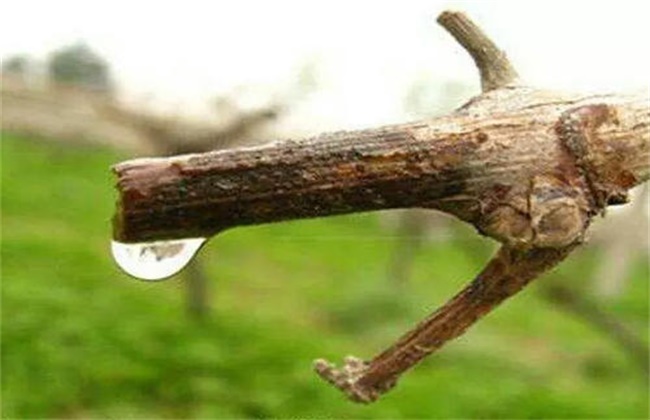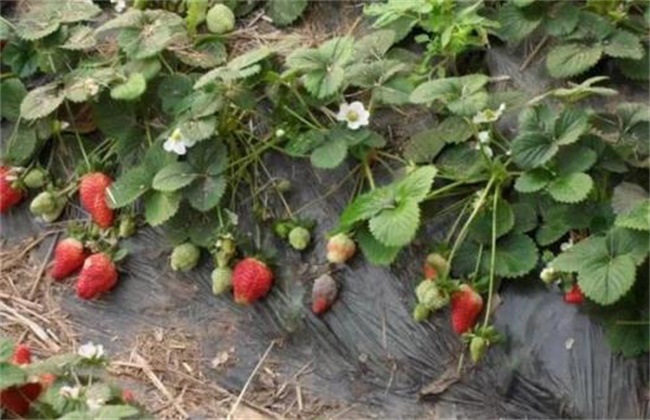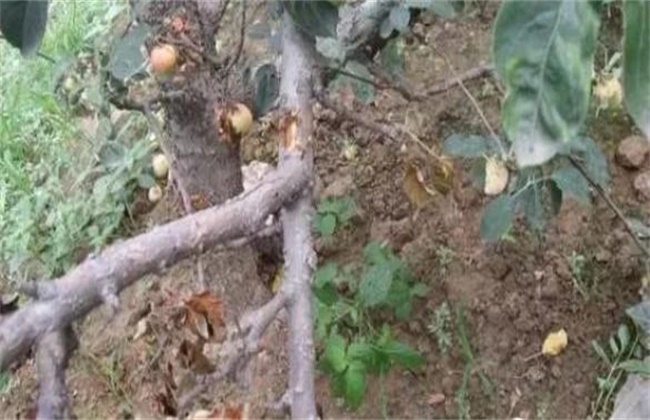Key points of management of grape bleeding period
Grape leaves flow from early spring to sprouting and spreading leaves, this period is called grape bleeding period, when the grape roots begin to absorb water and nutrients from the soil, and the liquid in the tree begins to flow. At this time, if the wound is improperly pruned or carelessly caused, the sap will flow out of the wound, which is the phenomenon of bleeding. Bleeding contains a lot of water and nutrition, bleeding is extremely disadvantageous to the growth of trees, light will reduce production, heavy will kill the plant, so grape bleeding is extremely important, let's take a look.

1. Unearthed in time
For the grapes that are not buried against cold, the grapes are pruned before the emergence of typhoid, and the garden is put on the shelf, while for the grapes buried against cold, timely unearthed is of great significance for the sprouting and healthy growth of laying hens. Unearthed overload, not too many roots, branches and buds have been drained, but also premature senescence frost harm; unearthed after the night shelf is very easy to be knocked off, resulting in bleeding. The best time should be in the early and middle of April to make the plant gradually adapt to the external environment.
2. Watering in time
After the grapes are unearthed and put on the shelf, we should begin to irrigate the bud water, and the amount of irrigation should be moist in a soil layer of more than 50 centimeters. In areas with drought and little rain in spring, watering should be thoroughly watered once to meet the needs of sprouting and branching. Non-buried areas should irrigate budding water before sprouting according to rainfall.
3. Scientific fertilization
The fertilization of grape during the bleeding period should be based on available nitrogen fertilizer, and the commonly used fertilizers are urea, potassium dihydrogen phosphate, potassium sulfate, boric acid and so on. Because grapes are sensitive to chloride ions, it is not recommended to use chlorine-containing fertilizers such as potassium chloride. The demand for potassium in grapes far exceeds that of nitrogen and phosphorus, so more potash should be applied. For the orchards that did not apply base fertilizer last autumn and winter, organic fertilizer can only be applied to more than 30 cm of soil layer, fertilization should not be too deep, so as not to hurt the roots and cause injury.
4. Raise the ground temperature
The climate is changeable in early spring, and the low temperature rises slowly after watering, so after fertilizing and watering, the white plastic film should be covered between the rows in order to rapidly increase the ground temperature. At the same time, it is necessary to eliminate weeds, reduce diseases and insect pests, maintain soil moisture and improve soil structure.
The above is the introduction of the key points of grape management. I hope it can help you. If you want to know more about it, please follow us.
Related
- Moge, come on! The staff of the peasant association in the producing area of cantaloupe were frightened when the crowd gathered.
- Causes and Solutions of low Fruit setting rate of Apple
- Symptoms and control measures of passion fruit virus disease
- Fruit growing lesson: how do apple orchards keep high yields?
- Can you build orchards in the mountains? What are the pros and cons?
- How to manage the coloring period of Crisson grape?
- This paper introduces the processing technology of two kinds of fig products.
- How much is a month for retired teachers in rural areas by 2020?
- How can strawberry planting increase sugar content? We should pay attention to management in many aspects.
- What are the cultivation techniques on how to improve the yield of golden fruit?



